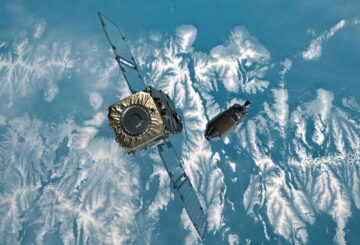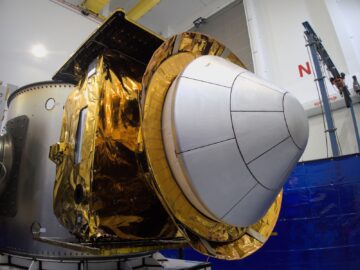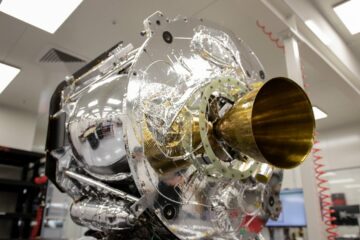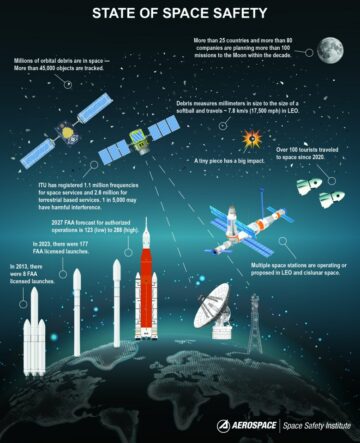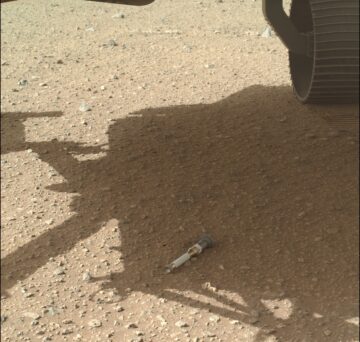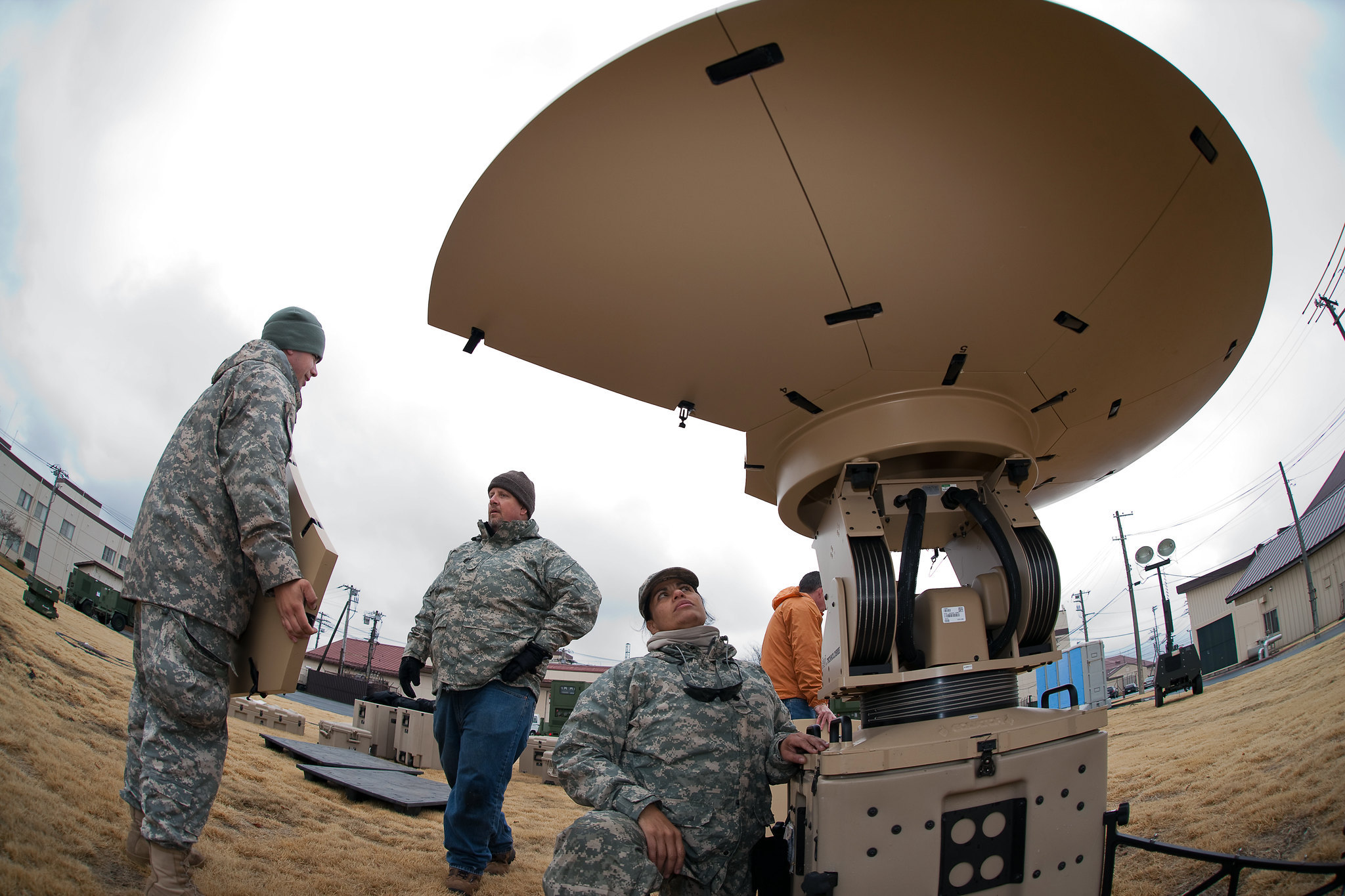
WASHINGTON — The U.S. Space Force should overhaul its current approach to procuring commercial satellite communications services, the RAND Corp. recommends in a report published Sept. 6.
RAND argues in the report that existing methods for procuring commercial satcom services inhibit the government from harnessing the full potential of commercial innovations.
The Space Force, which acquires satellite services for the U.S. armed forces, has set a goal to rely on a “hybrid” network of commercial and military satcom systems so it can take advantage of emerging constellations in low, medium and geostationary orbits. But the way it buys services – under separate contracts with individual providers — does not provide the flexibility needed to create an integrated satcom enterprise, said the report.
RAND is a nonpartisan think tank. The study was commissioned by the Space Force’s senior procurement executive Frank Calvelli, assistant secretary of the Air Force for space acquisition and integration.
Satellite communications users from across the military services and DoD buy satcom services through the Space Force-run Commercial Satellite Communications Office, or CSCO.
CSCO buys commercial services via a large number of disparate, short-term contracts, “many of which may provide overlapping capabilities, leading to inefficiencies,” said RAND.
U.S. Space Command, which is responsible to manage the allocation of satcom services to military users, is “unable to maintain situational awareness of which commercial satcom resources DoD has access to, in which regions, and how much.”
“This fragmented approach is untenable for acquiring commercial satcom services to support a hybrid architecture that integrates commercial and military capabilities … An enterprise approach is needed to acquire services that can meet the requirements and attributes desired in a hybrid architecture — such as portability, interoperability and data-sharing.”
RAND suggested that, with a different procurement approach, military users have an opportunity to leverage growing commercial capacity “that will far exceed that of military satcom as providers continue to increase their capacity in different orbits at various frequencies.”
“With abundant capacity and proper user equipment, commercial providers could provide rapid surge capabilities,” said RAND.
Ground equipment problems
The report also points out that military users mostly lack the necessary ground equipment to take advantage of diverse commercial services.
To tap into commercial services from multiple orbits, military users need different antennas with separate terminals to access the various radio frequencies. To integrate services from LEO, MEO, and GEO may require multiple antennas. Integrating a commercial terminal onto a DoD host platform can be complex.
Some military units and combatant commands are fielding multiband terminals and terminals that can be used with both commercial and military systems. But modernizing the entire DoD inventory will require a significant investment as DoD has more than 17,000 terminals of 135 different designs.
RAND said CSCO is evaluating different acquisition strategies to consolidate requirements for enterprise contracts while also supporting one-on-one contracts.
“We observed that accessing the commercial market in a more centralized way as a single buyer could result in greater influence on the market and better pricing,” said the report.
“More importantly, enterprise contracts could provide better situational awareness and enable operational flexibility to dynamically shift resources among multiple providers, a capability that is needed to achieve assured connectivity in a contested environment.”
RAND cautioned that making these shifts is likely to be met with some resistance “and user communities need to be assured that their requirements will be met.”
- SEO Powered Content & PR Distribution. Get Amplified Today.
- PlatoData.Network Vertical Generative Ai. Empower Yourself. Access Here.
- PlatoAiStream. Web3 Intelligence. Knowledge Amplified. Access Here.
- PlatoESG. Automotive / EVs, Carbon, CleanTech, Energy, Environment, Solar, Waste Management. Access Here.
- PlatoHealth. Biotech and Clinical Trials Intelligence. Access Here.
- ChartPrime. Elevate your Trading Game with ChartPrime. Access Here.
- BlockOffsets. Modernizing Environmental Offset Ownership. Access Here.
- Source: https://spacenews.com/new-report-recommends-space-force-change-how-it-buys-commercial-satellite-services/
- :has
- :is
- :not
- 000
- 17
- a
- abundant
- access
- accessing
- Achieve
- acquire
- Acquires
- acquiring
- acquisition
- across
- ADvantage
- AIR
- Air Force
- allocation
- also
- among
- an
- and
- approach
- architecture
- ARE
- Argues
- armed
- AS
- Assistant
- assured
- At
- attributes
- awareness
- BE
- Better
- both
- but
- buy
- BUYER..
- Buys
- by
- CAN
- capabilities
- capability
- Capacity
- centralized
- change
- commercial
- Communications
- communications services
- Communities
- complex
- Connectivity
- consolidate
- continue
- contracts
- Corp
- could
- create
- Current
- designs
- desired
- different
- disparate
- diverse
- DoD
- does
- dynamically
- emerging
- enable
- Enterprise
- Entire
- Environment
- equipment
- evaluating
- exceed
- executive
- existing
- far
- Flexibility
- For
- Force
- Forces
- fragmented
- frank
- from
- full
- goal
- Government
- greater
- Ground
- Growing
- Harnessing
- Have
- host
- How
- HTML
- HTTPS
- Hybrid
- in
- Increase
- individual
- influence
- innovations
- integrate
- integrated
- Integrates
- Integrating
- integration
- Interoperability
- into
- inventory
- investment
- IT
- ITS
- jpg
- Lack
- large
- leading
- LEO
- Leverage
- likely
- Low
- maintain
- Making
- manage
- Market
- May..
- medium
- Meet
- met
- methods
- Military
- modernizing
- more
- mostly
- much
- multiple
- necessary
- Need
- needed
- New
- number
- observed
- of
- Office
- on
- onto
- operational
- Opportunity
- or
- out
- Overhaul
- platform
- plato
- Plato Data Intelligence
- PlatoData
- points
- potential
- pricing
- procurement
- proper
- provide
- providers
- published
- Radio
- rand
- rapid
- recommends
- regions
- rely
- report
- require
- Requirements
- Resistance
- Resources
- responsible
- result
- s
- Said
- satellite
- secretary
- senior
- separate
- sept
- Services
- shift
- Shifts
- short-term
- should
- significant
- single
- So
- some
- Space
- Space Force
- strategies
- Study
- such
- support
- Supporting
- surge
- Systems
- Take
- tank
- Tap
- Terminal
- than
- that
- The
- their
- These
- Think
- think tank
- Through
- to
- u.s.
- U.S. Space Force
- under
- units
- used
- User
- users
- various
- via
- was
- Way..
- which
- while
- will
- with
- zephyrnet


